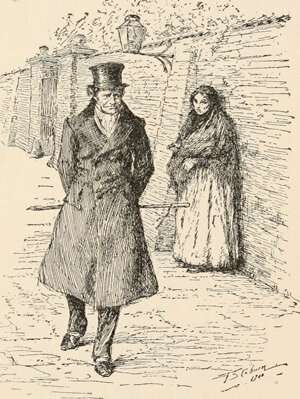Rethinking Scrooge: Could Dickens' most famous character be neurodivergent?

Most would agree that Charles Dickens' classic novel "A Christmas Carol" offers a valuable lesson on how to treat others and a heartwarming tale of redemption—but Essaka Joshua, an associate professor of English at the University of Notre Dame, believes there is more to the story.
The novel's main character, Ebenezer Scrooge, is one of the most well-known fictional characters and is frequently portrayed. There are more than 100 adaptations, including movies, plays, radio and TV programs, where the cold, miserly curmudgeon who hates Christmas has a change of heart just in time to embrace the holiday.
In a new analysis of Scrooge, however, Joshua offers an unexpected perspective, by asking a simple question: What if we were wrong about Scrooge? What if it is, in fact, the characters who surround him who may need more empathy for their fellow man—particularly if that man is neurodivergent?
Joshua, whose research and teaching focus on disability studies, is now researching how the reading of "A Christmas Carol" changes if Scrooge is seen in this way.
"It does not matter what condition Scrooge may or may not have. These diagnoses change over time," she said. "But what happens if we think of Scrooge's lack of sympathy and other traits as a legitimate part of his personality? Does Scrooge cause harm to himself or others? And is his 'cure' consensual or desired?"
Scrooge's personality is characterized by his lack of compassion, his solitariness, his reluctance to spend money and his frustration with the expectation that he should conform to societal behavioral norms. Examining which of those behaviors actually need correcting helps the reader understand how Dickens presents normative personality types and how non-normative behavior is stigmatized, Joshua said.
"In places, the text is quite explicitly nasty about his negative behavior, but in other places, there is more ambiguity," she said. "He eats the same melancholy meal each day at the same melancholy tavern—and we have to join the dots on that one and say 'because he's mean.' But it may well be that we shouldn't infer that at all, and we should just say 'because he has to, because that's his routine and that's what he needs.'
"And I like that nuance, I like the gaps there, because it tells the reader to do some work. What's fascinating is that it's a different text for everyone as a result."
In fact, Joshua argues, many of Scrooge's behaviors can be seen as cognitive and behavioral coping strategies commonly used by neurodivergent individuals to reduce anxiety, by avoiding social interactions, sticking to routines and using verification rituals to calm himself.
When things take a supernatural turn, Scrooge seems most disturbed that the ghosts who visit him disrupt his sense of the expected—often in trivial ways, she notes. Although the first spirit to visit Scrooge, his late business partner Jacob Marley, lays out a plan for the following ghosts' visits, they do not adhere to it, arriving in different rooms and at different times than Scrooge expects.
"Dickens describes the level of anxiety welling up in Scrooge because the arrangements have just been messed about with. And, you know, it makes a huge amount of sense to me," she said. "That would actually be as frightening for some people as the ghosts. Like Scrooge, Dickens himself had a difficult childhood. This is very likely to be trauma-informed writing."
The issue of whether non-normative behavior is an accepted feature of one's personality or requires correction is an important one for disability studies, Joshua said.
Neurodiversity challenges the definition of conditions like autism solely as disorders to be cured or medical conditions to be managed. Instead, autism has been reconceptualized as a different way of being, with its own strengths and advantages, and experts seek to balance a need for human flourishing and respect for difference with support for appropriate and consensual medical interventions.
In "A Christmas Carol," the issue is complicated by two separate ethical problems—both the personal and the social effects of Scrooge's actions and what harm they may cause to himself and to those around him.
In the setting of Victorian England—with a huge wage gap between the poor and the wealthy—his lack of compassion has the potential to cause suffering. However, Dickens does not separate that social harm from the self-harm of Scrooge's moroseness and instead centers the plot on a "cure" for both problems, Joshua said.
"I think Dickens really drops the question of the personal ethics and whether people have the right to express their personalities in certain ways and supplants it with the social issue," she said. "Scrooge never consents to or initiates this cure, even though he comes to believe his behavior is both improvable and wrong. This raises an important bioethical dilemma: Is Scrooge experiencing his behavioral traits negatively, or is he experiencing the effects of the social stigma of these traits?
"Dickens' concern for social welfare may well exceed his concern about Scrooge's inherent value before the supernatural intervention."



















